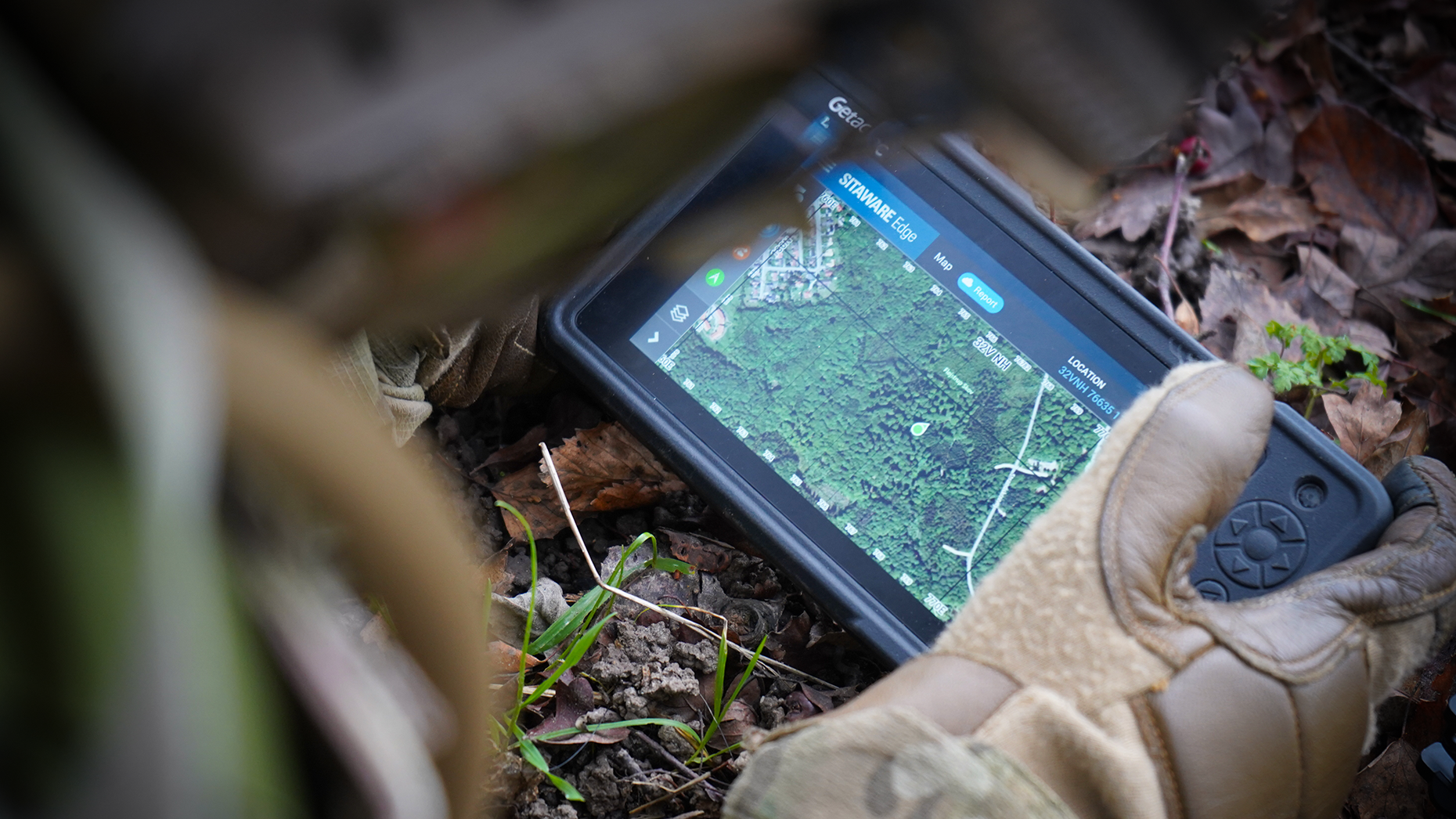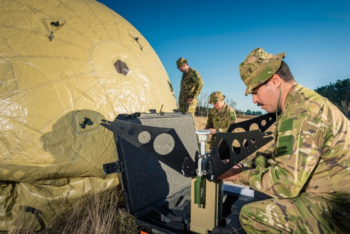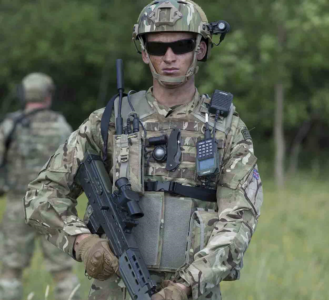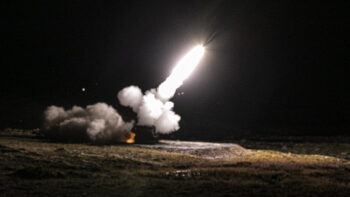
The Sitaware Edge Battle Management System is part of a package of software that was procured from Danish company Systematic in 2016. (Systematic)
In an attempt to beef up its networked communications systems, New Zealand’s army is looking to take the simplest approach: buy Commercial Off The Shelf (COTS) capabilities, rather than try to build its own.
The Defence Force’s Network Enabled Army (NEA) project is focused on introducing mature technologies and equipment that can be introduced rapidly and provide the required capabilities quickly — a stark, and conscious, contrast to some of its allies. Even so, New Zealand is prepared to spend well over NZ$700 million ($435 million USD) over the next decade on this program, a major outlay for the small Pacific nation.
Buying COTS solutions means that New Zealand will operate as a quick follower instead of leading with expensive systems development. While other Five Eyes partners — US, UK, Australia and Canada — can afford to pay to develop and de-risk new technology and equipment, New Zealand’s role as the more junior partner in the agreement, with a defense budget sized to match, means COTS is the most risk-averse option available.
The end goal of NEA is to create the NZ Army’s future network environment, known as the Land Tactical Information Network (LTIN). NEA was established to coordinate and develop specific projects to provide the NZ land forces with deployable and networked C4 and ISR capabilities for the LTIN that integrates the tactical to strategic network domains offering access to joint, coalition and wider government capabilities.
RELATED: Fear grows that US mil satellite comms are falling behind, study says
The NZDF’s Strategic Plan 2019-2025 called for the Army to be “combat-capable, flexible, to be able to lead combined operations in the South Pacific, to operate in a more integrated way with our partners, and for us to be ready to respond with more frequency to events in our neighbourhood.”
The NEA program is a priority for the NZDF and it is being delivered through four separate tranches. This approach is used to ensure that the introduction of new systems could be delivered in an affordable manner within the NZDF’s resource constraints and in step with user requirements, while also being able to respond to technology developments over time and reduce risk.
Tranche 1, delivered between 2015 and 2021, established the core of the Army’s Mobile Tactical Command System (MTCS). Under a NZ$40 million ($24.9 million USD) contract with Harris Defence Australia, awarded in December 2018, the company provided RF-7850S Secure Personal Radio, AN/PRC-163 Multi-channel Handheld Radios, AN/PRC-158 Multi-channel Manpack radios and AN/PRC-160 HF/VHF wideband manpack radios.

The GATR inflatable SATCOM terminal was purchased under a $5 million contract with Cubic in 2017. The company is also providing support and integration of an iDirect-based, time division multiple access (TDMA) network within the NZDF’s existing and future hub infrastructure. (NZDF)
Cubic has also delivered inflatable GATR 2.4 SATCOM antenna and terminals that will give NZ Army units connectivity from deployed areas back to New Zealand, via access to the Wideband Global SATCOM (WGS) system. Previously this capability was provided through other satellite providers. Additional equipment includes ancillary items such as tables, chairs, monitors, power systems and shelters that will be used to establish a Common Command Post Operating Environment (CCPOE).
RELATED: In Army, worry follows Senators’ proposed cuts to network, comms upgrades
The Army’s 2nd/1st Battalion Royal New Zealand Infantry Regiment (RNZIR) has received and is testing this equipment, which will eventually be used to support the deployment of a Task Force Headquarters.
Peter Fitness, the Programme Director, Network Enabled Army at the New Zealand Ministry of Defence, told Breaking Defense that Tranche 1’s goal “was to prove the concept of a deployed voice and data radio network that can be connected via satellite link back to the Joint Force Headquarters in New Zealand. The network was successfully tested at an exercise in late-2021 and the programme team are now working through the supporting elements of the system such as training and maintenance.”
Nick Gillard, Director Land Domain at the New Zealand MoD, told Breaking Defense that this exercise “provided great insight” into what the program will mean for the Army. He confirmed a second, smaller Covid-19 restricted exercise was also completed in early 2022 and that final acceptance is scheduled for 2023.

A British soldier wearing a variant of the L3Harris Falcon III RF-7850S Secure Personal Radio that has been bought by the NZDF for the NEA project. The radio provides a platoon level networking with voice and data communication and reliable position reports over wideband and narrowband modes. (L3 Harris)
Further orders will be placed to allow the deployment of a 250-man task group along with software packages from Danish company Systematic. The company’s Headquarters software is already in use as part of the Army’s Battle Management System (BMS) and the Army is expected to receive the Frontline and Edge BMS modules that can be used by troops — although this is a future capability without a confirmed target date, according to Gillard.
Meanwhile the MoD is introducing Tranche 2 systems. Tranche 2 has been running since 2019 with a budget of NZ$106 million ($66 million USD) and has procurement initiatives underway that will deliver Information Intelligence (I2) sensors and Electronic Warfare (EW) systems as well as additional SATCOM and CCPOE equipment. This EW equipment includes electronic support measures, electronic attack and spectrum survey systems that must be compatible with the Harris radios and Sitaware software that will be used by a Light EW team – provided in a man-portable, static manpack and vehicle-mounted versions.
Gillard confirmed that a closed tender for the EW equipment was released with responses due in December 2022. Meanwhile the I2 RFP is expected to be released in 2023.
Tranche 2 took a big step forward with the May released of a Request for Proposal (RFP) for new uncrewed reconnaissance and surveillance capabilities. The RFP calls for the delivery of four packages, including two-to-four sets of fixed-wing (including hybrid) uncrewed aerial systems (UAS), 30-40 nano-sized remotely piloted aircraft systems (RPAS), 18-30 micro RPAS and remote ground sensors.
In the RFP, NZDF states clearly that “what we don’t want” is any capabilities “that are or require a bespoke design, or have not been proven in a military operational setting.” Ruling out any developmental, high-risk, or unproven equipment means that the Army should avoid many of the problems that have be-set complex military communications projects in other modern armies.
The UAS will be fitted with optical, magnetic and thermal sensors to be employed in day and night surveillance missions by the 16 Field Regiment that operates the Army’s artillery guns. The UAS will be integrated with Sitaware Headquarters software for this purpose and are intended to provide timely and accurate information on local conditions.
“The ability to see what is happening on the ground is an important tool to ensure accurate assessment of the risks of a situation and is particularly useful in humanitarian and disaster relief response and search and rescue missions,” Fitness said. “The intention is to enter into contracts by July 2023. Subject to manufacturing lead times, the individual systems will be in the hands of soldiers in December next year,” he added.
The third tranche will expand the amount of equipment procured to support a Combined Arms Task Group. Budgeted at NZ$300 million (US$186 million) it will also start to replace some of the initial equipment first purchased at the beginning of Tranche 1 and provide communications equipment for the Army’s vehicle fleet, artillery units and health and usage monitoring systems for the Army logisticians and engineers.
“NEA Tranche 3 is in the detailed scoping period and is designed to expand the capabilities delivered in Tranches 1 and 2,” Fitness confirmed.
A further Fourth Tranche is expected budgeted at NZ$300-600 million (US$186-373 million) for the 2024-28 timeframe that will allow the combined arms task group to conduct sustained deployments long-term.






















